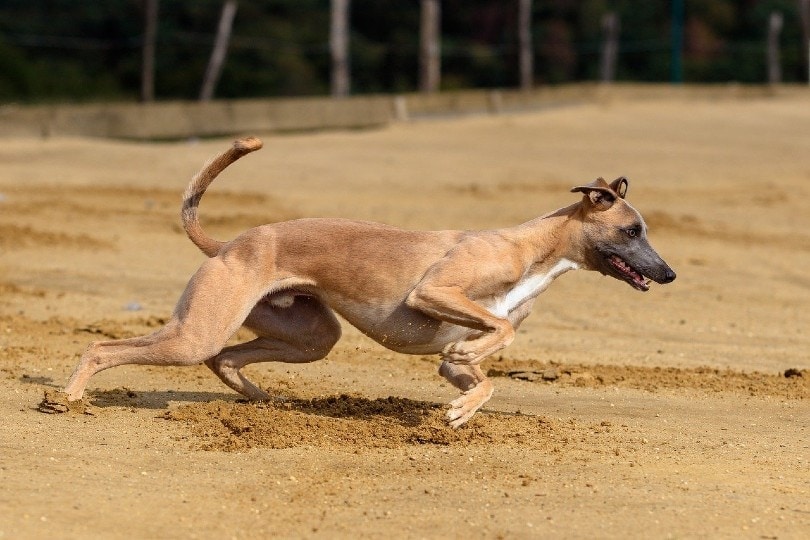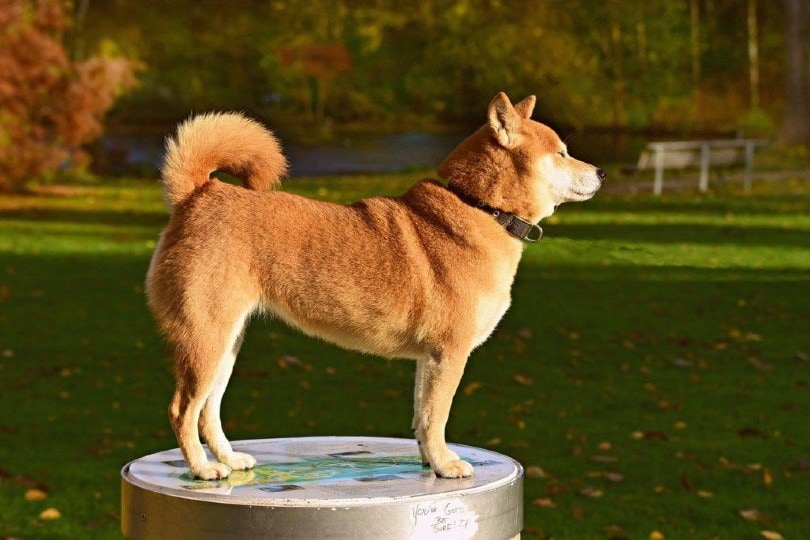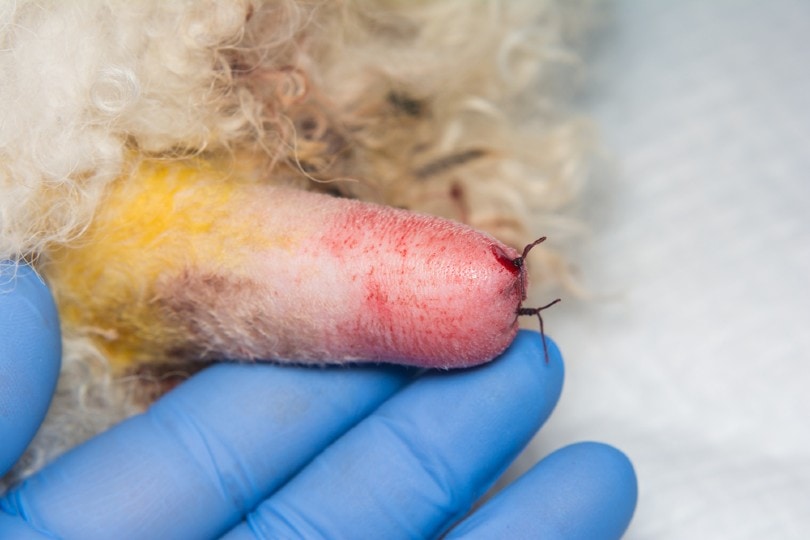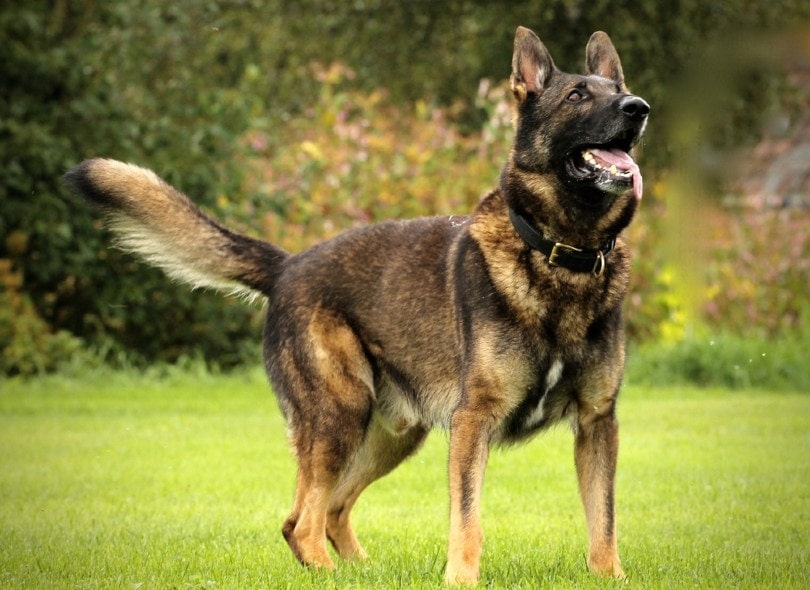
It’s probably crossed every dog owner’s mind at least once. Why do dogs have tails? Most dogs are born with them, so it’s only natural to wonder what evolutionary purpose these appendages serve. Dogs’ tails are essential for their daily lives and serve many purposes in their everyday functioning.
Dogs’ tails have three primary purposes: movement, balance, and communication. They use their tails for one of these three things in every part of their lives.
Movement

The second example illustrates that dogs’ tails are critical to their movement abilities. They use their tails to aid in several vital movements, and if you watch sports dogs, you can see these tails in high gear!
For instance, when a dog jumps, they will raise their tail to increase their elevation and lower their tail when they land to improve their aerodynamics, much like the flaps on an airplane’s wings. Their tails also act as rudders when swimming and achieve the slalom motion during the weave poles in agility trials.
Movement is an essential function, even for non-sport dogs, and they use their tails to aid and achieve much of their movement.
Balance

For many animals, the tail serves as a critical balance tool. They use their tails as a counterbalance when they move. If you ever watch your dog run or walk on a narrow surface, you’ve seen their tail hard at work, keeping them balanced. Much like a tightrope walker uses a pole to counterbalance on the rope, the dog’s tail moves side to side, in the opposite direction of body tilt, as they move to keep their center of gravity steady.
Another good example is when a dog is running and must make a sharp turn. The front of the body will turn in the desired direction, but the forward momentum prevents the backside of the body from following in the same way. The dog will throw their tail in the direction they’re turning to prevent the back of the body from swinging around in a wide arc, allowing them to complete the sharp turn.
Communication

Dog tails are also an essential communication tool for dogs. Owners and other dogs alike can learn to use a dog’s tail to cue their mood. A happy dog will hold their tail comfortably and may wag it in a wide, sweeping arc. A frightened dog will tuck their tail between their legs and against their belly.
Understanding what our dogs’ tails tell us can be critical to protecting them from perceived threats. Dogs use their tails to communicate to the outside world what they’re thinking. Knowing when your dog is feeling anxious can help you remove them from situations that make them feel anxious, building trust between you and your dog.
Tails are more than a visual aid, though. As your dog moves their tail around, it spreads their scent in the area around them. Dogs use pheromones or smells that are meant to convey information to communicate with each other.
Humans can’t smell the smells their pets are putting out, but they exist between us. For instance, it’s been shown that a man can smell when a woman is sexually aroused even if they don’t immediately identify that “smell,” their behavior changes when this pheromone is introduced.
Dogs are the same way, and by wagging their tail, they’re spreading their pheromones around so that other dogs can more easily understand what they’re feeling.
Tail Docking: What Is It?
Tail docking is the process of removing a dog’s tail after birth.
Docking the tail is a breed standard for breeds, including Poodles, Pembroke Welsh Corgis, English Springer Spaniels, and Jack Russel Terriers. Docking as a breed standard is more common in Terriers and Spaniels.

Criticism of Tail Docking
Tail docking is a practice that is, understandably, criticized by dog lovers worldwide. At the same time, many practice supporters may point anecdotally to the sport or work improvements; no scientific justification can be made for the ludicrous idea that docking the tail prevents rabies.
The practice has been banned in many countries worldwide, and many vets recommend against the docking of tails unless the tail is unusually long for the dog’s proportions. A dog with an excessively long tail might be genuinely prone to injury, which could warrant tail shortening.
Tail docking is currently unrestricted in the United States. Though a growing movement exists to outlaw the practice, several states, including New York and Vermont, have considered introducing laws to ban the practice.

Tail Docking in Practice
The American Veterinary Medical Association recommends against the docking of tails, particularly for vanity reasons. The AVMA states that there is no substantial evidence that the removal of the tail provides any protection against injury, as tail injuries make up just 0.23% of dog injuries, even amongst working breeds. Further, a study conducted in Britain concluded that you would need to dock the tails of at least 500 dogs to prevent just one tail injury.
The AMVA has recommended that cosmetic alterations be removed from American breed standards since 1976, and the presence and wording of this recommendation have persisted. However, they acknowledge that some dogs are at a higher risk of tail injuries than others.
The future of tail docking remains murky as some governments have taken a hardline stance against the practice while others are content to allow it to continue.
Do Dogs Need Tails?
At least, according to the AVMA, yes, dogs need their tails. They’re not only a critical tool for a movement that provides physical safety to the dog but also an essential communication tool for dogs. With very few exceptions, there’s no scientific justification for shortening or removing a dog’s tail.
As we’ve covered, dogs use their tails in every facet of their lives. Unless a veterinarian recommends tail docking, there is no reason an owner should investigate the practice.

Summary
Dogs’ tails are an endearing and essential part of their body. The tail provides various functions critical to the dog’s quality of life and should be protected, just like every other part of the dog. Once we understand what the dog’s tail does and means, we can understand our dogs and build trust with them.
Featured Image Credit: Bert De Schepper, Pixabay







